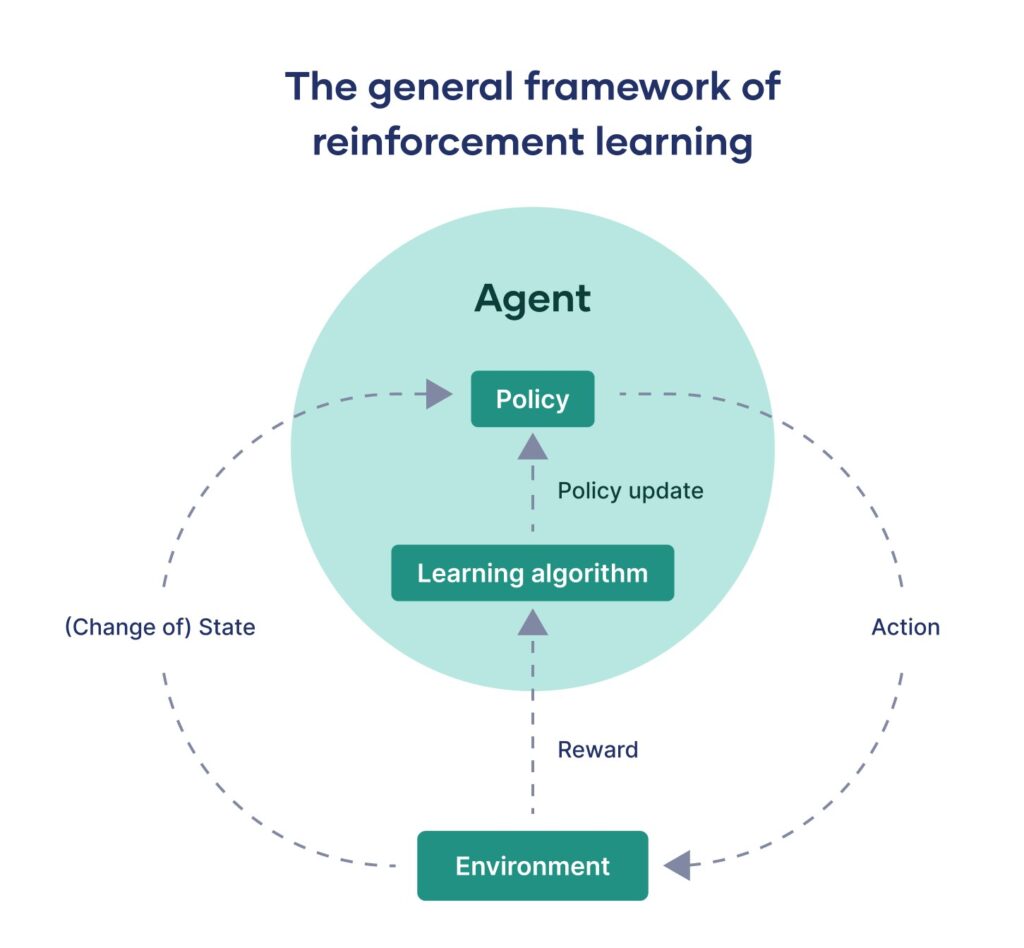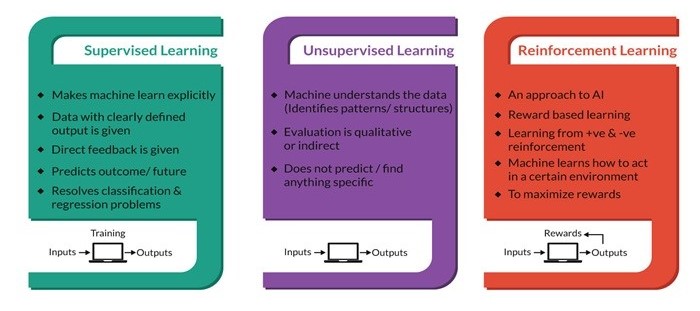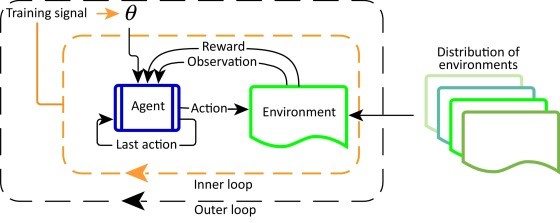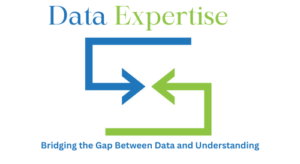Introduction to Reinforcement Learning
In the realm of artificial intelligence, reinforcement learning (RL) emerges as a powerful paradigm, distinguished from its supervised and unsupervised counterparts. This blog delves into the essence of reinforcement learning, marking it as a crucial step beyond supervised learning in the AI evolution journey.
Beyond the basics, reinforcement learning embodies a paradigm where machines not only predict but also act, learning from the consequences of their actions in a dynamic environment. This approach, drawing inspiration from the way humans and animals learn from their experiences, represents a significant leap in the field of artificial intelligence, enabling machines to make complex decisions and adapt their strategies over time.

Understanding Supervised Learning
Before we embark on the RL journey, it’s essential to grasp the supervised learning landscape. Supervised learning, where models learn from labeled data, has been foundational in AI’s success stories. However, its limitations become apparent when models face unlabelled or unpredictable environments.
Supervised learning’s predictive power has been instrumental in applications ranging from image recognition to language translation. However, its reliance on labeled datasets and predefined structures limits its applicability in scenarios where flexibility and adaptability are crucial. This limitation becomes especially apparent as we move toward more autonomous, intelligent systems that require the ability to learn from their environment and make decisions in real time.
Key Features of Supervised Learning
- Labeled Data: Relies heavily on a dataset with input-output pairs.
- Predictive Modeling: Aims to predict the output based on input data.
- Performance Measure: Utilizes accuracy, precision, and recall for evaluation.
Transitioning from Supervised to Reinforcement Learning
Transitioning to RL signifies a leap from static, labeled datasets to dynamic, decision-making environments. Unlike supervised learning, RL focuses on learning optimal behaviors through interactions with the environment, offering a more flexible and adaptive learning approach.
The transition from supervised learning to reinforcement learning embodies a shift from static data interpretation to dynamic, strategic decision-making. This evolution opens up new possibilities for AI applications, allowing systems to operate in unpredictable environments and learn from their interactions.

The Shift in Paradigm
- Decision Making: From predicting to making decisions.
- Environment Interaction: Learns by interacting with its environment.
- Reward System: Guided by a reward system rather than predefined labels.
Key Points in the Transition
- Autonomy: RL enhances machine autonomy through self-guided learning.
- Adaptability: It allows systems to adapt their strategies based on environmental feedback.
- Long-Term Planning: RL focuses on long-term outcomes, optimizing not just immediate rewards but also future gains.
Core Concepts of Reinforcement Learning

At its core, reinforcement learning is about the interaction between an agent and its environment, where the agent learns to achieve a goal by trying different strategies and receiving feedback in the form of rewards. This iterative learning process, driven by the agent’s experiences, is what sets RL apart from other machine learning paradigms, offering a framework for developing systems that can learn and adapt over time.
Key Terminologies
- Agent: The learner or decision-maker.
- Environment: The world with which the agent interacts.
- Action: A set of choices the agent can make.
- State: The current situation returned by the environment.
- Reward: Feedback from the environment.
Learning Process
- The agent receives the state from the environment.
- It performs an action based on its policy.
- The environment returns the next state and reward.
- The agent updates its policy based on the reward received.
Real-World Applications of Reinforcement Learning
RL’s adaptability has paved the way for groundbreaking applications across various sectors.
The versatility of reinforcement learning is evidenced by its growing range of real-world applications, from optimizing game strategies to enhancing patient care and streamlining logistics. These applications demonstrate RL’s potential to not only improve existing processes but also to create new opportunities for innovation and efficiency.
Gaming
In the gaming world, reinforcement learning has been a game-changer, enabling AI to master complex games like Go and chess. These achievements not only showcase RL’s strategic depth but also its potential to tackle problems that require a blend of tactical thinking and long-term planning.
- AlphaGo: Defeated the world champion in Go using RL.
Autonomous Vehicles
Reinforcement learning is steering the future of autonomous vehicles, enabling them to make real-time decisions, adapt to changing conditions, and learn from experience. This application highlights RL’s role in advancing technologies that require a high degree of autonomy and adaptability.
- RL algorithms optimize driving strategies in real time.
Healthcare
In healthcare, RL is being used to develop personalized treatment strategies, optimize resource allocation, and improve patient outcomes. This application illustrates the potential of RL to impact fields that benefit from dynamic decision-making and continuous learning.
- Personalized treatment recommendations based on patient data.
Comparing Supervised, Unsupervised, and Reinforcement Learning
While supervised learning has excelled in structured prediction tasks and unsupervised learning in discovering hidden patterns, reinforcement learning stands out for its ability to make decisions and learn from the consequences. This distinct characteristic enables RL to address challenges that are beyond the scope of supervised and unsupervised learning, paving the way for innovative applications.
In the broader context of AI, these three learning paradigms complement each other, each offering unique strengths and capabilities. Understanding their differences and applications is crucial for leveraging the full potential of machine learning and artificial intelligence.
- 0Supervised Learning: Data-driven, predictive.
- Unsupervised Learning: Finds patterns or clusters in data without labels.
- Reinforcement Learning: Learns through trial and error, driven by rewards.
Challenges and Future of Reinforcement Learning
While RL holds immense potential, it faces challenges like high computational demands and the need for extensive training data. However, the future looks promising with advancements in algorithm efficiency and applications in complex domains.
As reinforcement learning continues to evolve, it faces challenges like sample inefficiency and the complexity of designing appropriate reward systems. Overcoming these challenges is crucial for advancing RL’s capabilities and broadening its application spectrum, signaling a future where AI can learn and adapt with unprecedented sophistication.
Potential Developments
- Enhanced algorithms for faster learning.
- Broader applications in complex, real-world environments.
Conclusion
Reinforcement learning stands as a transformative step in the AI domain, offering a robust framework for machines to learn from interaction and feedback. Its evolution from supervised learning marks a significant milestone in our quest to develop intelligent, autonomous systems.
The journey from supervised to reinforcement learning is not just a technical transition but a paradigm shift that offers a glimpse into the future of AI. As we continue to explore this frontier, reinforcement learning stands as a testament to the ongoing evolution of machine intelligence, promising to unlock new levels of autonomy, adaptability, and insight in the realm of artificial intelligence.



